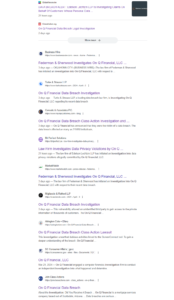
On April 2, Arizona-based On Q Financial notified the Maine Attorney General’s Office of a breach the mortgage lender experienced. Within days, law firms announced investigations into the breach and sought potential class action members.
Was there anything particularly unique that would trigger a legal feeding frenzy? No. But On Q Financial holds financial data on a lot of consumers seeking mortgages or home loans. And now 211,650 of those clients were being notified of a hacking incident.
According to On Q’s notification letter, ConnectWise notified them on February 20 of a vulnerability affecting its ScreenConnect software. On Q promptly patched and started investigating. On March 14, they discovered that an unknown individual had gained access to and exfiltrated clients’ personal data.
The notification did not list all the types of information that may have been stolen, but it includes name and Social Security number.
Letters were mailed to those affected on March 29.
Threat Actors Claim Responsibility
On Q Finacial did not provide any additional details about the attack but the ransomware group known as BianLian has claimed responsibility. On their dark web leak site, they claim to have acquired 1TB of data including:
- Technical data
- Accounting, budget, financial data
- Contract data and NDA’s
- Files from CFO PC
- Operational and business files; and
- Email and msg archives.
As proof, BianLian leaked a few files that included individuals’ tax forms, part of an Excel sheet with borrowers’ first and last names, postal addresses, full Social Security Numbers, and loan numbers. DataBreaches has not yet attempted to verify the data but has found in past investigations that BianLian generally does not fake proof of claims.
The Vulnerability
As Huntress reported on its blog:
ConnectWise ScreenConnect is a popular software used to monitor and manage systems remotely. On February 19th, ConnectWise issued an advisory that all versions below 23.9.8 of their on-prem version of ScreenConnect had two vulnerabilities (CVE-2024-1709 and CVE-2024-1708) and urged their users to patch immediately. Normally, this would not be a cause for alarm. However, one of the vulnerabilities was given a CVSS score of 10 out of 10, meaning it was the highest level of severity. As in, “stop whatever you’re doing and patch now” level of seriousness.
[…]
There were thousands of vulnerable ScreenConnect servers. Unfortunately, many who were unable to patch in time suffered serious consequences. Within 48 hours of the exploit PoC becoming public, Huntress reported that, “the adversaries taking advantage of this vulnerability have been VERY busy.” Attackers were using their new access to do all sorts of devious things, including dropping ransomware, cryptocurrency coin miners, and additional remote access to retain a presence on devices even after the ScreenConnect vulnerabilities were resolved.